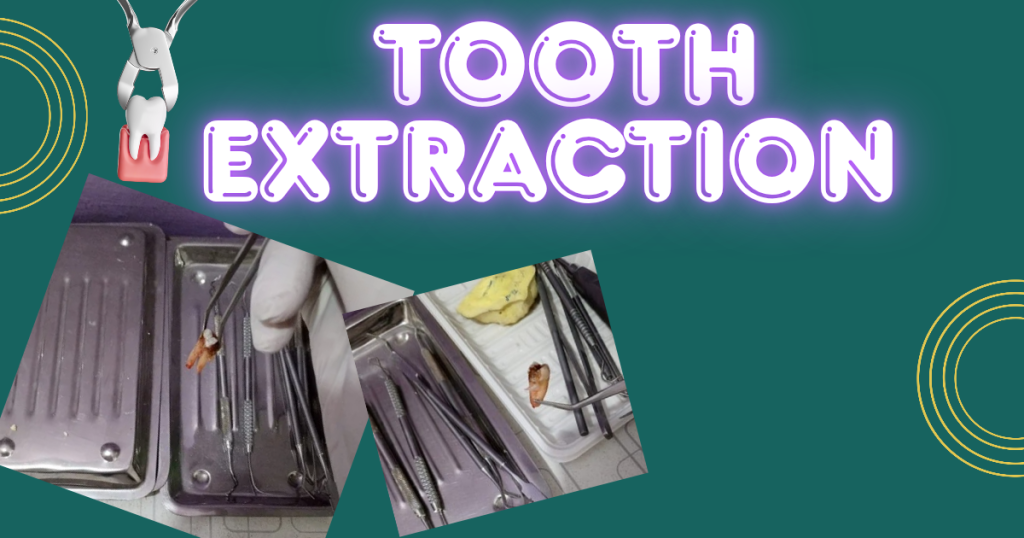Physical Address
304 North Cardinal St.
Dorchester Center, MA 02124
Physical Address
304 North Cardinal St.
Dorchester Center, MA 02124
Facing that nagging tooth pain or an overcrowded mouth and wondering if extraction is in your future? Tooth extraction is a common dental procedure where a l. ,. dentist gently removes a tooth from its socket, often to relieve discomfort from severe decay, infection, impacted wisdom teeth, or to make room for orthodontics—think of it as clearing the way for a healthier smile without the drama of old-school myths. If it’s your first time, don’t sweat it; most are quick and straightforward with local numbing to keep you comfy. In this easy guide for beginners, we’ll cover what tooth extraction really involves, step-by-step expectations, recovery tips, and when it’s truly needed, so you can head to your appointment feeling prepared and at ease.

What Exactly Is Tooth Extraction?
It’s basically pulling a tooth that’s causing problems or isn’t viable anymore. Dentists do millions yearly for issues like advanced decay, gum disease, or crowding. It’s safe when done by pros, and modern tools make it less invasive than you might think. Not every bad tooth needs yanking—sometimes fillings or root canals save it, but extraction prevents bigger issues like spreading infection.
Types of Extractions
Simple extractions handle visible, loose teeth—your dentist numbs, loosens with tools, and pulls. Surgical ones are for impacted or broken teeth, involving small incisions and stitches. Wisdom teeth often fall here, especially if buried. Your dentist picks based on X-rays and your health.
Why You Might Need One
Common culprits: Untreatable decay, abscesses, or pre-braces space-making. Impacted wisdom teeth can cause pain, swelling, or shift other teeth. Trauma from accidents or overcrowding might call for it too. Always a last resort after exploring fixes—early check-ups often avoid this.
Step-by-Step Procedure
First, numbing shots kick in, maybe sedation if you’re anxious. For simple pulls, they rock the tooth loose with an elevator tool and extract with forceps. Surgical adds cutting gum or bone if needed, then stitches. Whole thing takes 20-40 minutes; you bite on gauze after to stop bleeding.
1. Folks usually pull a tooth when there’s bad pain and the patient just wants it gone for good.
2. If the pain’s really intense, we might suggest meds for a couple days first to calm it down before yanking the tooth.
3. When the tooth’s in such rough shape that you can’t fix it with a filling or root canal, that’s when we gotta remove it.
4. Right after pulling the tooth, we pop some cotton in there to help stop the bleeding.
5.Plus, we recommend some meds to speed up the healing and keep infection at bay.
6. Stuff like Cedrox BD for antibiotics, Prevent 500mg to fight off bugs, and Maxit 75mg for pain relief.
How to Prepare
Eat light before if sedation’s involved—no food after midnight for general anesthesia. Tell your dentist about meds or conditions like heart issues. Arrange a ride home if sedated, and wear comfy clothes. Kids? Opt for a calm office with child-friendly vibes.
Recovery Tips That Help
Rest the first day, ice for swelling (20 mins on/off). Soft foods like yogurt or soup for a week—skip straws to avoid dry socket. Rinse with saltwater after 24 hours, take prescribed pain meds. No smoking or alcohol; heal time’s 1-2 weeks, but call if fever or heavy bleeding hits.
Costs
Simple extractions run $100-400, surgical $200-700, wisdom teeth $200-1,100 per tooth—factors like location and complexity play in. Insurance often covers medically needed ones; shop for affordable clinics or plans like CareCredit for payments.
Possible Complications
Dry socket’s the biggie—exposed bone causing pain, treatable with meds. Infection or bruising is rare but watch for. Follow aftercare to minimize risks; diabetics or smokers heal slower, so extra caution there.
FAQs About Tooth Extraction
Does it hurt?
With numbing, minimal during—soreness after, managed with ibuprofen.
How long to recover?
1-2 weeks for full healing; back to work in a day or two usually.
What’s dry socket?
Clot dislodges, exposing bone—painful but fixable; avoid sucking actions post-op.
Can I drive after?
Not if sedated—plan a ride; local numbing’s fine.
Alternatives to extraction?
Root canals or crowns often save teeth—ask your dentist first.
Wrapping up this easy guide to tooth extraction, remember it’s often a quick fix that paves the way for a pain-free, healthier mouth—whether ditching a troublesome wisdom tooth or making space for straighter smiles, the process is far less scary with modern numbing and care, leaving you back to normal in no time. For first-timers, arming yourself with these basics means walking in confident and healing smarter. If this rundown has eased your worries, chat with your dentist about your options soon.